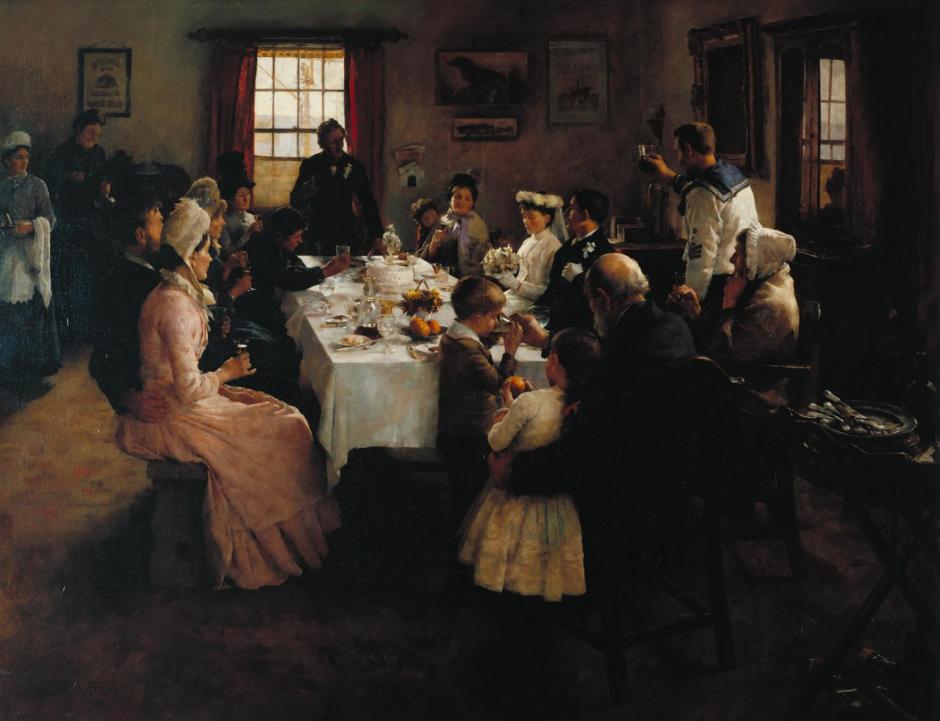There were other artists in the circle of Whistler and Sickert who gained a reputation at the time of being Impressionists, beside Philip Wilson Steer. Among them was a Canadian painter, Elizabeth Adela Forbes (1859–1912), then under her maiden name of Armstrong. She had first trained at what’s now the Royal College of Art in London, then between 1877-80 she studied at the Art Students League of New York under William Merritt Chase. His advice took her to Munich, where she studied under J Frank Currier and Frank Duveneck, who in turn had been a fellow student of Chase.
In 1882, she lived in the artists’ colony at Pont-Aven in Brittany, returned to London, and attended one of Chase’s summer schools in the Netherlands. She eventually settled in Newlyn, Cornwall, with her widowed mother. From there she exhibited often and very successfully, winning medals at the Exposition Universelle in Paris in 1891, and the World’s Columbian Exposition in Chicago in 1893. In 1889, she married the painter Stanhope Forbes, but her output and success only seem to have increased as a result.

Her first dated painting that I can find is this small oil sketch of Volendam, Holland, from the Zuidende, from about 1895. With her husband, she visited this part of the Netherlands on several occasions.

She painted this much larger portrait of Sisters at about the same time. This was exhibited at the Royal Academy in 1896. For its time, this doesn’t appear particularly Impressionist, although her brushwork in the white dresses is delightfully loose.
In 1899, she and her husband established the Newlyn Art School, which quickly became the heart of the Newlyn school of painting.

She exhibited Here We Are Gathering Nuts in May at the Leicester Galleries in London in 1904. She has used mixed media including black chalk, watercolour and gouache in her distinctive style.

Blackberry Gathering is more painterly again, particularly in its clouds and textiles, and dates from about 1912.
Many of her paintings remain in private collections, and few have been dated. Yet several are those in which Impressionist influence shines through strongest.

Her oil painting of The Village Lane is quite Impressionist in style.

The Orchard is a small oil sketch painted on cardboard.

Her watercolour view Across Mounts Bay is another painting which may have been completed in front of the motif. This bay is on the southern, English Channel, coast of Cornwall, sweeping from Lizard Point to Gwennap Head. More famous for Saint Michael’s Mount, the rocky island which gives the bay its name, it became popular with painters during the late nineteenth century.
After her marriage, she was accused by critics of adopting the style of her husband, Stanhope Alexander Forbes (1857–1947). On the evidence of their paintings, nothing could be further from the truth. Although a few of Stanhope Forbes’ paintings did become a little painterly in passages, throughout his career he remained a resolute realist, who had a tendency towards near-photographic detail.

The Runaway Knock from 1888 is one of the most painterly of his paintings that I’ve been able to find.

More typical of his detail and style is his unusual Health of the Bride from 1889, which enabled his marriage.
Stanhope Forbes had lived in Newlyn, a small Cornish fishing village which had become an artists’ colony, since 1884. The year after he had arrived, Elizabeth Armstrong settled there with her mother, the two fell in love, and wanted to marry. The bridegroom needed to raise the money to pay for their wedding, and that was the spur to him to paint this work.
He shows a typical wedding breakfast in the local inn. Proposing a toast to the newly married couple is their best man, in a sailor’s ‘square rig’ uniform. Gathered around are several generations of their families, surrounded by references to the local fishing industry. Forbes’ models were all local people, merely wearing their ‘Sunday best’ clothes, just as they would for a real wedding.
Forbes’ patron, the sugar-magnate Sir Henry Tate, bought this painting for £600, which was ample to fund the Forbeses’ wedding. When it was exhibited at the Royal Academy, its reception was favourable, and the painting eventually passed to the nation. A few months after its sale, Stanhope and Elizabeth Forbes married in Newlyn, thanks to this painting of a wedding breakfast. This reversed the events shown in Courbet’s Burial at Ornans, where he reconstructed the local event some time afterwards; Forbes here preconstructs his own wedding breakfast in anticipation of the event, and to enable it to take place some months later.
Were either of the Forbeses Impressionists? I think it’s safe to say that Stanhope never showed any tendency towards Impressionist style in any of his paintings that survive today. Elizabeth did, though, remain independent, and was clearly influenced by Impressionist paintings and her time as a pupil of William Merritt Chase. I think it’s fair to consider her to have been a British Impressionist.
References
Elizabeth Forbes on Wikipedia
Stanhope Forbes on Wikipedia.

